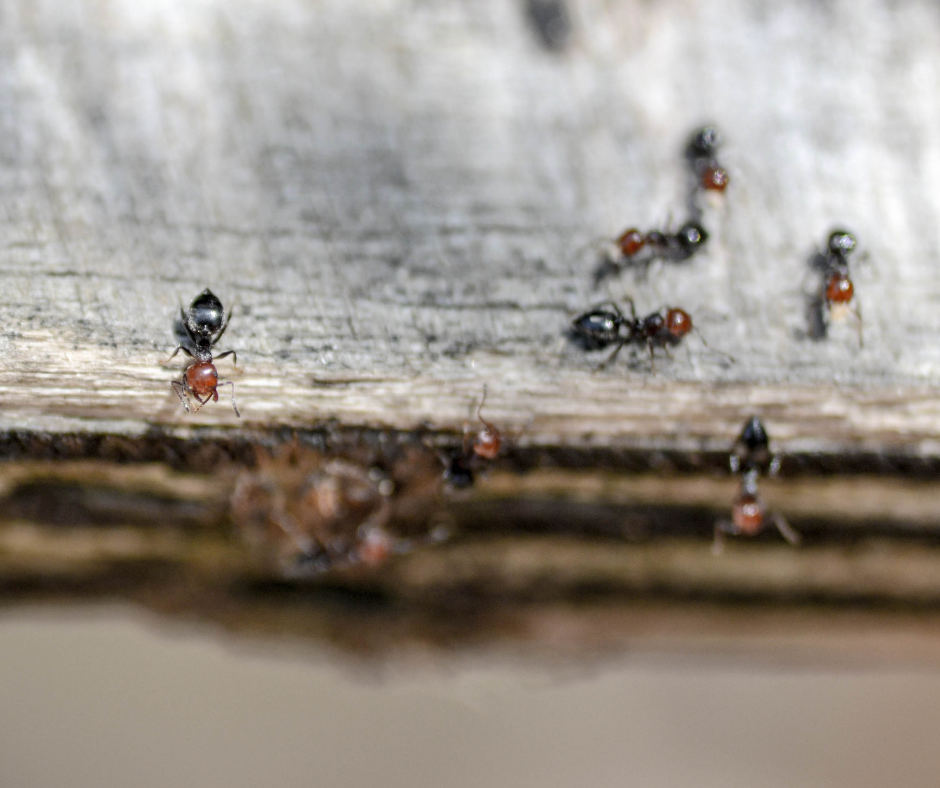How to Tell Acrobat Ants From Others
With over 12,000 species of ants globally, it can be challenging to determine which type of ant you have and assess the damage they could potentially create. And that is precisely why the good folks at James River Pest Solutions have added Pest ID to our list of valuable services. Educating our clients on the particular bugs they find in the home will help them decide the urgency for extermination.
Join James River Pest Solutions on a journey to set the acrobat ants apart from other species of ants.
Appearance
Ants are ants, right? Well, yes and no. This particular ant goes by other names like the cocktail ant and the valentine ant. The acrobat ant is very shiny and is a small to medium ant. Some are light red, and others may be brown or black. But their most identifiable characteristic is the heart-shaped gaster or abdomen. And the abdomen is heart-shaped. The acrobat ant will hold the gaster up over its thorax when threatened. In addition, they will bite and give off a foul odor when disturbed.
Acrobat ants have six legs, two antennae, and three-segmented bodies.
Size: 1/16 to 1/8 inch long
Habitat
The acrobat is an arboreal, outdoor ant. In other words, they live in trees outside. They like damaged wood or wood hollowed out by other insects. And they do not damage the trees they live in.
Wood and leaves attract these tiny ants and can get into your home through firewood, construction materials, plants against walls, and leaf piles.
Should they get into the house, they will scale the walls and behave as they would in a tree.
The Diet
A war can break out if an acrobat ant chooses a tree infested with termites. The acrobat ants will attack the termites to take their tree over. Wasps in trees are in danger as well. In fact, these ants eat both termites and wasps.
Also, acrobat ants will eat the honeydew produced by aphids and the sweets on your kitchen counters. Outside they will eat dead bugs, aphids, mealybugs, and scale insects.

Preventing Acrobat Ants in Your Home
To see if you have acrobat ants in your home, look for small holes in moisture-damaged areas. If there is a pile of sawdust under the spot, you may have acrobat or carpenter ants.
If you suspect you have an acrobat ant invasion going on inside your home, make no mistake. It is essential to call a professional exterminator to deal with the situation.
But to prevent them from thinking your home is an excellent place to nest, take care of the outside of your home in the following ways.
- Keep your gutters free of build-up and debris, and stay pointing away from the home’s foundation.
- Repair leaky spigots and fixtures to keep excess water away.
- Clear rubbish, debris, and overgrowth from the lawn. And if there are fallen trees or rotting leaves, be sure to rake them up to keep the ants from extending their nests.
- Trim the bushes and trees away from home, so they do not touch the walls or foundation.
- Don’t bring firewood in for the colder months unless you have inspected it for ant activity.
- Seal the cracks of your home’s doors and windows, including weather stripping.
Getting Rid of Acrobat Ants
Keeping ants out of the home in the first place is the best idea. Your local pest solutions expert can assist with acrobat ant exclusion and elimination outside the home. However, if they happen to invade the house, a professional should be called out right away. Baits and poisons can be toxic and often just temporary solutions, causing the ants to divert their path.
James River Pest Solutions has the answer for pest control in your home. Ants are eradicated with our years of experience and quality products. You can trust your home to our pest control solutions.
If you happen to notice acrobat ants in a particular area of the home, call your local pest solutions company immediately before it gets any worse.
Contact James River Pest Solutions for all your acrobat ant and pest control needs in Virginia.

